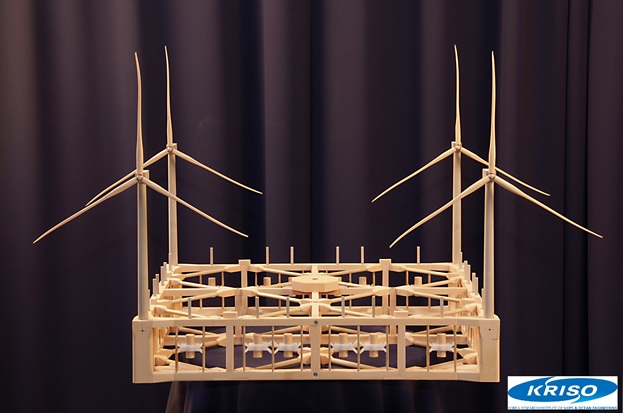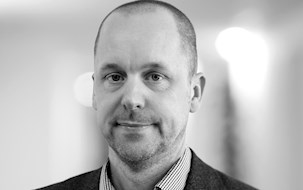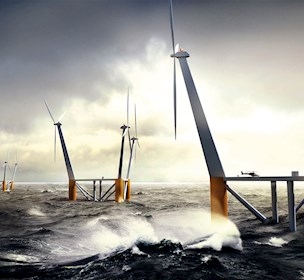Floating wind and wave hybrid energy platform
FORCE Technology is involved in a new project regarding a floating wind and wave hybrid energy platform that will be placed in South Korea.
The project that was initiated by KRISO (Korea Research Institute of Ships and Ocean Engineering) three years ago has now reached the testing phase. KRISO hired Samsung Heavy Industries Marine Research Institute as their consultants. Samsung then choose FORCE Technology as their partner when it came to testing the impact of wind and current on the platform.
Highest concentration of energy
The square floating platform will be equipped with four offshore wind turbines - one in each corner - and wave energy converter (WEC) buoys along the sides. The WEC buoys move vertically along the waves to absorb the energy, thereby producing electrical power from the movements of the waves. Thereby the platform becomes a power generation system for energy produced from both wind and wave.
The platform will be placed offshore South Korea approximately 4 kilometres from an island called Jeju. After investigating the area, KRISO found that the concentration of wind and wave energy was most prominent at this exact location.
It was also decided to make the platform as a floating device. This way the platform can be placed further away from the shore than usually.
Facilities and expert knowledge
Samsung who are consultants on the project organised by KRISO, visited our hydro- and aerodynamic testing facilities in Lyngby, Denmark to test the impact from wind and current on a scaled model of the platform. The wind tunnel test was used to determine the wind loads on the above-water part of the platform including wind turbines and the current loads on the underwater part of the platform. The results will be used to optimise the design of the platform to ensure efficiency and safety.
KRISO will later decide whether the project will be realized.



